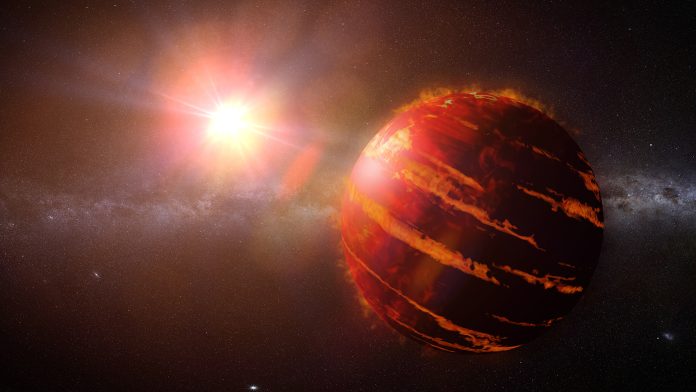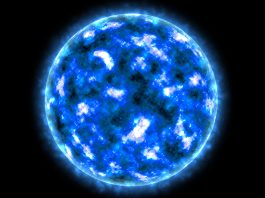A Durham University study has uncovered a new mechanism that could solve the mystery of the orbital decay of hot Jupiters.
The researchers propose that stellar magnetic fields play a crucial role in dissipating the gravitational tides responsible for the orbital decay of hot Jupiter exoplanets.
The study is published in The Astrophysical Journal Letters.
What are hot Jupiters?
Hot Jupiters are massive, gaseous planets similar to Jupiter that orbit extraordinarily close to their parent stars. They complete one orbit in only a few days.
The close proximity between planet and star produces gravitational tides that transfer orbital energy, causing the planets to spiral inwards over billions of years until they are eventually consumed.
WASP-12b is a hot Jupiter whose decaying orbit will send it into its host star WASP-12 in a few million years.
Current theories cannot explain the observation of orbital decay in this system.
Theories have revealed a new mechanism
According to the team, which also included scientists from the University of Leeds and Northwestern University, strong magnetic fields within certain sun-like stars can dissipate the gravitational tides from hot Jupiters very effectively.
The tides create inward waves inside the stars.
When the waves come into contact with magnetic fields, they get converted into different types of magnetic waves that travel outwards and eventually disappear.
Dr Craig Duguid of Durham University, said: “This new mechanism has wide reaching implications for the survival of short period planets and particularly hot Jupiters.
“It opens a new avenue of tidal research and will help guide observational astronomers in finding promising targets to observe orbital decay.
“It is also quite exciting that this new mechanism could be observationally tested within our lifetime.”
Finding additional hot Jupiters
The findings suggest that some nearby stars could be good targets for searching for additional hot Jupiter planets with decaying orbits.
If found, they could provide more evidence about how magnetic fields impact the tides from these planets.
The research has the potential to reveal where the dissipated tidal energy goes within the star’s interior.









